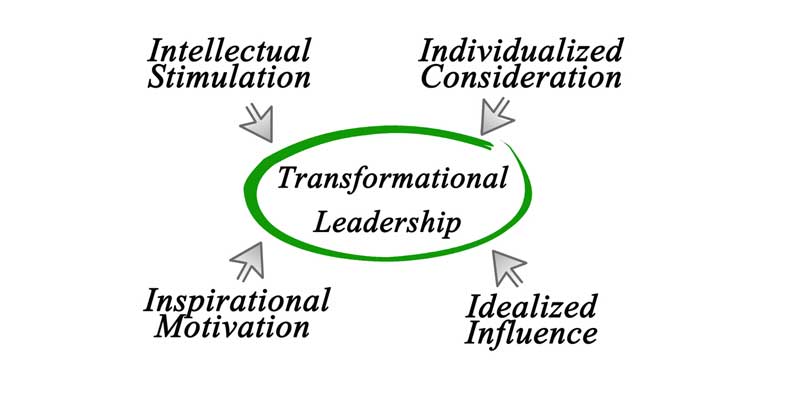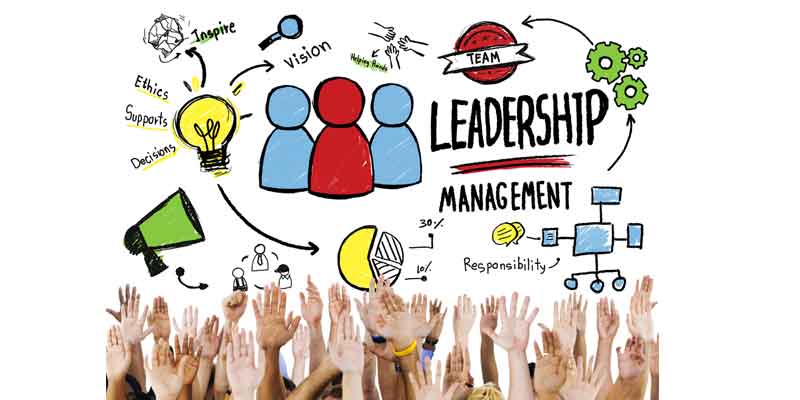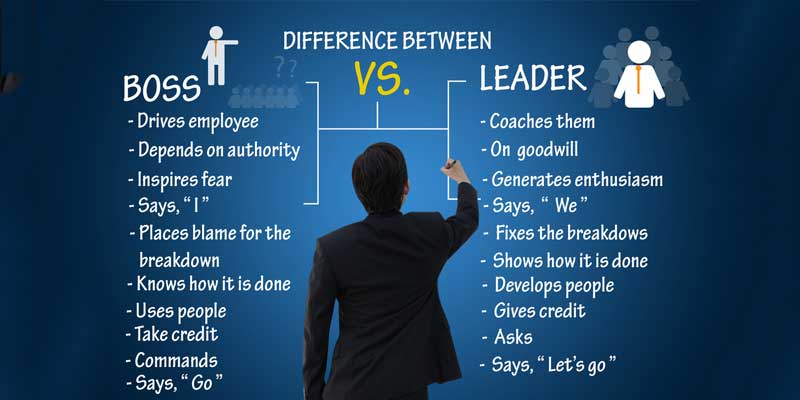If you discover yourself during a leadership position, you may be wondering how to develop leadership and management skills to urge you to hurry and be able to perform your new duties to the most effective of your ability. While becoming an excellent manager and leader requires time and knowledge, there are some belongings you can do to enhance your leadership and management skills right off the bat, positioning you for fulfillment in your new role.
Leadership is each quest space associate degreed a sensible ability that encompasses a people able to to “lead” or guide different people, teams, or entire organizations. In leadership, a frontrunner evokes others to act whereas at the same time directive the method that they act. Leaders should have the crucial thinking skills to understand the simplest thanks to using the resources at the associate degree organization’s disposal. Leadership additionally talks over with associate degree organization’s management structure.
It is the associate degree art of motivating a gaggle of individuals to act toward achieving a typical goal. In a very business setting, this will mean directive workers with a technique to satisfy the company’s wants and demands.
A leader is somebody the United Nations agency will see however things will be improved and the United Nations agency rallies individuals to maneuver toward that higher vision. Leaders will work toward creating their vision as a reality whereas putting individuals initially. Simply having the ability to inspire individuals isn’t enough; leaders have to be compelled to be empathic and connect with individuals to achieve success. Leaders don’t have to be compelled to return from a constant background or follow a constant path. Future leaders can truly be additional various, that brings a range of views. Of course, people may trouble my definition. The foremost necessary issue is that organizations are united internally with their definition of leadership.
Leadership is the ability of a private or a gaggle of people to influence and guide followers or different members of the organization to realize common goals.
Leadership involves creating sound and generally troublesome selections, making and articulating a transparent vision, establishing doable goals, and providing followers with the data and tools necessary to realize those goals.
Styles or Ways by Which Leadership and Management Skills can be Established
What makes a leader efficient? There are some styles or ways by which leadership and management skills can be established. They are discussed below:
Transactional Leadership
Transactional leadership is targeted at cluster organizations. It establishes a transparent chain of command and implements a carrot-and-stick approach to any or all sorts of management activities.

It is regarded because transactional leadership as a result of leaders provide associate degree exchange; they reward sensible performances and penalize unhealthy practices.
In transactional leadership, short-run tasks will be completed effectively and workers are unlikely to achieve their full inventive potential in such conditions.
Servant Leadership
In servant leadership, individuals like power-sharing models of authority, prioritizing the wants of their team and encouraging others to create collective calls.

Servant leaders do not have any authority and that’s why they feel a conflict to put their workers in previous business objectives.
Autocratic Leadership
Autocratic leadership could be an additional extreme version of transactional leadership. These leaders have important management over the employees and infrequently think about different employees’ suggestions or share power.

There may be an absence of ability because of strategic direction coming back from solely the leader.
Jobs that are unit fairly routined or need restricted skills are best suited to this leadership. It’s additionally common in military organizations.
Laissez-Faire Leadership
This word is more commonly used to describe economic environments, laissez-faire literally means “let them do” in French. In creative jobs or workplaces, where employees are novice learners, laissez-faire leadership can be effective.
In laissez-faire leadership, leaders communicate with the employees and explain the aim of the group. So that employees perform better to achieve group goals and by doing so leaders prevent work standard slipping.
Democratic Leadership
This is additionally called participative leadership. In this leadership, leaders usually provoke input from team members before creating a judgment. Employees have civil rights because the leader must provide their selections. Employees sometimes report higher levels of job satisfaction in these environments as a result of their area unit scope to allow opinion and also the company will enjoy the higher ability. On the other hand, the democratic method is slower in creating calls and should not operate well wherever fast decision-making is crucial.
Bureaucratic Leadership
This leadership is most frequently enforced in extremely regulated or body environments, wherever rules and rules are a unit followed by workers.

The government officials’ leadership type focuses on mounted duties among a hierarchy wherever every worker contains a setlist of responsibilities, and there’s no need for collaboration and ability. This leadership type is simplest in extremely regulated industries or departments, like finance, health care, or government.
Charismatic Leadership
There is a particular quantity of overlap between charismatic and transformational leadership as a result of each design’s bank heavily on the positive charm and temperament of the leader.
Transformational leaders build confidence in a very team that continues to be after they march on however once a charismatic leader isn’t there to guide, it generally leaves an influence vacuum.
Situational Leadership
Developed by management consultants Paul Hersey and Ken Blanchard in 1969, situational leadership could be a theory that the simplest leaders employ a spread of various designs reckoning on true. However, many of us have a natural leadership vogue that creates change between roles.
Transformation
The transformational leadership vogue is analogous to the coach vogue in that it focuses on clear communication, goal-setting, and worker motivation. However, rather than putting the bulk of the energy into every employee’s individual goals, the transformational leader is driven by a commitment to structure objectives.

Because these kinds of leaders pay a lot of their time on the massive image, this sort of leading is best for groups that may handle several delegated tasks while not constant management.
Leadership and Management Skills
A leader possesses four-dimensional traits in him that make him appealing and effective in behavior. The subsequent area unit the requisites to be given in a very sensible leader. There are some leadership and management skills that make a leader more efficient in his work. They are in the following:
1. Physical Look
a frontrunner should have a delightful appearance that pulls people. Physique and health area unit is important for a decent leader to handle any drawback or any state of affairs.
2. Vision and Foresight
IF a frontrunner can’t foresight, he cannot maintain influence. He should have the facility to examine any things, then he will easily frame logical programs.
3. Intelligence
A frontrunner United Nations agency is intelligent and will examine issues and troublesome things. He ought to be analytical in order that he will simply weigh the professionals and cons so summarizes true. That’s why a positive mind and mature outlook are incredibly necessary for a frontrunner.
4. Communicative Skills
A frontrunner should be ready to communicate the policies and procedures with individuals. His communicative skills ought to be clear, precise, and effective.
5. Objective
A frontrunner ought to have a good outlook in order that he will be free from bias. His opinion and judgment ought to be supported by facts and logic.
6. Knowledge of Labor
A frontrunner ought to have data regarding the character of his work and will additionally fathom the character of work of his subordinates, in this fashion he will win the trust and confidence of his subordinates.
7. Sense of responsibility
Responsibility associate degreed responsibility towards an individual’s work is incredibly necessary to bring a way of influence. A frontrunner should have a way of responsibility towards structure goals in order that he will get most of the capabilities exploited in a very real sense. He must inspire himself and arouse and urge to allow better of his talents. During this method, he will inspire the subordinates to the simplest.
8. Self-Confidence and Will-Power
A frontrunner should rely on himself that’s necessary to earn the arrogance of the subordinates. He ought to be trustworthy to any or all others and should handle all sorts of things with full willpower.
9. Humanist
This attribute to be a gift in a very leader is crucial as a result of the deals with people in general and is in personal contact with them. He must handle the private issues of his subordinates with care and a spotlight. Therefore, treating the people in general on humanitarian grounds is crucial for building a congenial setting.
10. Empathy
A frontrunner ought to perceive (the issues|the issues) and complaints of workers and will even have a whole read of the wants and aspirations of the staff to unravel their problems or for the other necessary. He ought to step into the shoes of others to perceive their things. This helps in rising human relations with the staff.
11. Courage
Leaders should have courageousness to require risk. courageousness could be a key ability permanently leaders. Instead of avoiding issues or permitting conflicts to fester, courageousness permits leaders to accelerate and move things in the right direction and that’s why leaders must have courageousness.
12. Respect
A leader ought to treat individuals with respect. It’ll ease tensions and conflict, produce trust, and improve effectiveness and additionally build sensible relationships with people that follow the leader.
13. Self-Awareness
The higher leader perceives himself, the simpler he will be. to understand others, others’ thoughts, a leader’s initial fathom himself.
14. Gratitude
Giving thanks can truly create one a much better leader. The feeling will result in higher shallowness, reduced depression and anxiety, and even higher sleep therefore Leader ought to maintain this quality.
15. Learning Agility
Learning nimbleness will be delineated because of the ability to grasp what to try and do once one doesn’t know what to try and do.

Once one is in a position to stand out in strange circumstances, he may already have learned nimbleness. however through observation, experience, and effort. explore anybody will foster learning nimbleness.
16. Influence
Some individuals feel “influence” sort of a dirty word. However having the ability to persuade individuals through logical, emotional, or cooperative appeals could be a part of an efficient leader. Influence must be done genuinely and transparently and it’s quite totally different from manipulation. It needs emotional intelligence and trust-building to influence those individuals.
Ways to Develop Leadership and Management Skills
In the following, the ways of developing leadership and management skills are discussed:

1. Find a Mentor
It will be helpful for you to find a mentor. These can be individuals within your own company (such as senior management, or your own supervisor) or trusted colleagues and friends who work elsewhere.
2. Study Different Leadership and Management Styles
Spend your time researching different leadership styles and determine which one you identify with the foremost. This can facilitate you’re recognizing your strengths and potential weaknesses as a pacesetter. The simplest managers know the way to tap into these strengths, and the way to draw on other leadership styles to complete areas of weakness.
3. Return to High school
One of the most effective ways to develop your leadership and management skills is to require a category or pursue a degree or certificate.
Many accredited instruction institutions offer programs that specialize in these subject areas, both on-campus and online if you’re trying to find broad-level business management skills, a master’s in business administration could be right for you, or if you are looking to develop your leadership skills specifically, you may pursue a graduate certificate in leadership. There also are intensive leadership programs available, like a year-long masters in executive leadership.
4. Read – Lots
While formal education may be a great choice for those looking to make their leadership and management skills, self-education may be a good alternative for brushing informed specific skills.

Dedicating an hour approximately on a daily basis to reading management-focused publications, like the Harvard Business Review, how-to or management theory books, and watching talks, webinars, or videos could be a good way to stay your skills fresh and learn something new.
5. Identify the Areas During Which you Would Like to Enhance
We all have things about ourselves that we’d prefer to improve on, especially when it involves how we interact with others. If you’re striving to become a good manager, it is vital for you to own a transparent understanding of what those areas are, and actively work to vary them.
Maybe you want to be a far better communicator, or find it difficult to create decisions. Once you’ve identified what it’s you would like to figure on, find ways to practice daily in low-stakes situations, like deciding which route you are going to require home after work.
6. Attend a Training or Workshop
If you do not have the time to dedicate to a full degree or certificate program, you may want to explore options for leadership and management training and certificates in your area or online.
These can target length from some hours to a full week and might cover very specific topics like critical thinking or be more broad, giving an outline of a subject area like general management skills. Many organizations offer such programs, but an honest place to start out is that the American Management Association’s Leadership Training Programs.
7. Practice!
The absolute best thanks to improving your leadership and management skills are to practice! If you’re already in an exceeding leadership role, try applying new techniques to your interactions along with your team, or putting a replacement skill into practice, favor listening, or giving more constructive feedback.

If you’re not in such a task, you’ll be able to still tackle responsibility within your team or division on specific projects, or find a leadership role outside the workplace, for instance, joining the board of directors of a nonprofit, or helping to run an area association.
Leadership and Management Skills- Relationship & Differences
Leadership and management skills are the terms that are usually thought-about synonymous however there are some relationships between them and conjointly there are also some limitations.
Relationship between Leadership and Management
Leadership is a vital part of effective management that desires to be understood by folks. As an important part of management, outstanding leadership behavior depends upon building associate degree settings within which every and each worker develops and excels within the organization. Leadership is outlined because of the potential to influence the cluster efforts towards the accomplishment of goals
Leaders develop ways that build and sustain competitive advantage. For optimum structure potency, organizations need strong leadership and strong management.
Differences Between Leadership and Management
Leadership differs from management in several ways; they are:

- Whereas managers create the structure of the organization and delegate authority and responsibility, leaders provide direction by developing the structure vision and so communicate them to the staff and encourage them to realize it.
- Whereas management includes specializing in coming up with, organizing, staffing, directional, and controlling; leadership is especially a locality of directional operation of management. Leaders should specialize in building relationships with others listening to other people, doing teamwork, helping their team members, inspire, motivate and persuade them.
- Whereas managers follow the organization’s policies, rules- rules and procedures, the leaders follow their own motivation.
- Management is a lot of science because the managers square measure precisely, planned, standard, logical, and a lot of minds. Leadership, on the opposite hand, is an art. In a company, if the managers square measure needed, then leaders square measure a must/essential.
- Whereas management deals with the technical matters in a company; leadership deals with the associate degree organization.
- Once management is reactive, leadership is proactive.
- Management relies a lot on written communication; on the opposite hand, leadership relies a lot on verbal communication.
Leadership accompanied by management sets up a replacement direction and makes economical use of resources to realize it. Each leadership and management skill is essential for individuals still as a structured success.
Examples of the Most In-Demand Leadership and Management Skills for Employees
Leadership skills conjointly embrace the talents folks ought to steer staff toward the accomplishment of the business goals, inspire them, drive modification, and deliver results.

There are many alternative leadership and management skills needed within the geographical point, however, the foremost in-demand ones include:
- Active listening
- Sympathy
- The flexibility to share clear messages and create advanced ideas simple to grasp for everybody
- Strategic thinking skills
- Risk management skills
- Organizing skills
- Project management skills
- Creativeness
- The flexibility to inspire and persuade others
- Flexibility
- The flexibility to show data into action
- Project coming up with
- Active listening
- Coming up with and delivering skills
- Folks management skills
- The flexibility to assess employees’ strengths and weaknesses
- Business storytelling
- Time management
- The flexibility to make trust
- Sturdy communication skills
- Quality
- Responsibleness
- Management skills
- Humility
- Strategic thinking skills
- Honesty
- Relationship
- The flexibility to align the staff with the corporate values and goals
- A powerful leadership vision
- Recruiting skills
- Persuasion skills
- The flexibility to assist staff to realize that means at work
- Sturdy personal magnetism
- Resilience
- Emotional Intelligence
Importance of Leadership and Management Skills
Leadership is a very important operation of management that helps to maximize potency and to realize structure goals. The importance of leadership and management skills are given below:

1. Initiated Action
The leader could be one who starts the work by human activity, the policies and plans to the subordinates from wherever the work really starts.
2. Motivation

A pacesetter proves to be taking part in associate degree incentive roles within the concern’s operating. He motivates the staff with economic and non-economic rewards and thereby gets the worm from the subordinates.
3. Providing Guidance
A pacesetter needs to not solely supervise however conjointly play a guiding role for the subordinates.
4. Creating Confidence
Confidence is a very important issue which may be achieved through expressing the work efforts to the subordinates, explaining them clearly their role and giving them tips to realize the goals effectively.
5. Morality Build Up
Leaders should help their team members in building up morality so that workers can work confidently. A pacesetter will be a morale-building by achieving full cooperation in order that they perform with better of their talents as they work to realize goals.
6. Builds Work Environment
Management is obtaining things done from folks. Associate degree economical work setting helps in sound and stable growth. He ought to treat staff on humanitarian terms.
7. Coordination
Coordination will be achieved through adaptive personal interests with structure goals. This synchronization will be achieved through correct and effective coordination that ought to be the primary motive of a pacesetter.
8. Role of a Leader
Following square measure the most roles of a pacesetter in a company :
1. Required in the Slightest Degree Levels
Leadership could be an operation that is vital in the slightest degree levels of management. Within the prime level, it’s necessary for obtaining co-operation in the formulation of plans and policies. Within the middle and lower level, it’s needed for interpretation and execution of plans and programs framed by the highest management.
2. Representative of the organization
A pacesetter, i.e., a manager is alleged to be the representative of the enterprise. He needs to represent the priority at seminars, conferences, general conferences, etc. His role is to speak the principle of the enterprise to the outside public. He’s conjointly representative of the own department that he leads.
3.Integrates and Reconciles the Non-Public Goals With Structure Goals
A pacesetter through leadership traits helps in reconciling group action and the non-public goals of the staff with the structure goals. He’s making an attempt to coordinate the efforts of individuals towards a standard purpose and thereby achieves objectives. This may be done provided that he can influence and obtain willing co-operation and urge to accomplish the objectives.
4. He Solicits Support
A pacesetter could be a manager and besides that, he’s someone the World Health Organization entertains and invites support and cooperation from subordinates. This he will treat his temperament, intelligence, maturity, and skill which may offer him positive results.
During this regard, a pacesetter needs to invite suggestions and if potential implement them into plans and programs of the enterprise. This way, he will solicit full support of staff which ends up in temperament to figure and thereby effectiveness in running of a priority.
5. As a Disciple, Thinker and Guide
A pacesetter should possess the three-dimensional traits in him. He will be a disciple by sharing the emotions, opinions, and wishes with the staff. He will be a guide by superintendence and human activity the staff the plans and policies of prime management and secure their co-operation to realize the goals of a priority.
Every now and then he may play the role of a counselor by substance and a problem-solving approach. He will hear the issues of the staff and take a look at how to unravel them.
Conclusion
Leadership and management skills will be interchangeable. To be an honest leader you ought to have leadership and management skills. Because at some point, you’re visiting to make decisions, cope with the case, communicate with subordinates. Leaders and managers add very alternative ways. But in the end, they need to achieve success in their work.
Leadership is probably the foremost necessary performance of management it facilitates maximizing potency which may help to realize the general vision and goals of the business.
The basic skills embody downside finding and higher cognitive process, planning, meeting management, delegation, communications, and managing yourself. Those basics are the inspiration from that to develop additional advanced practices in management and leadership.
References




